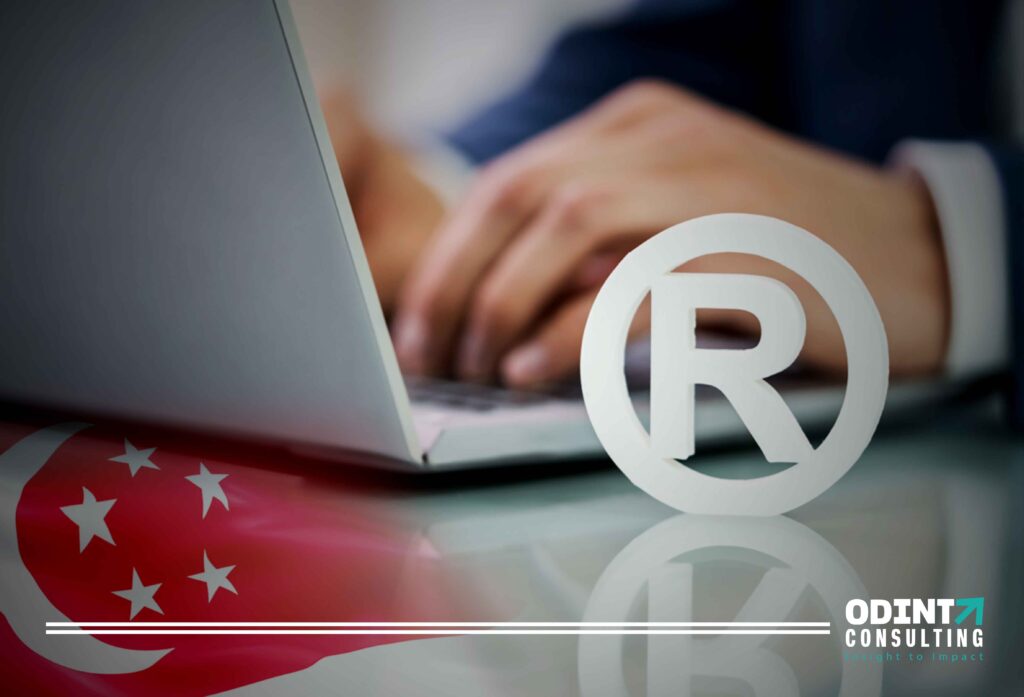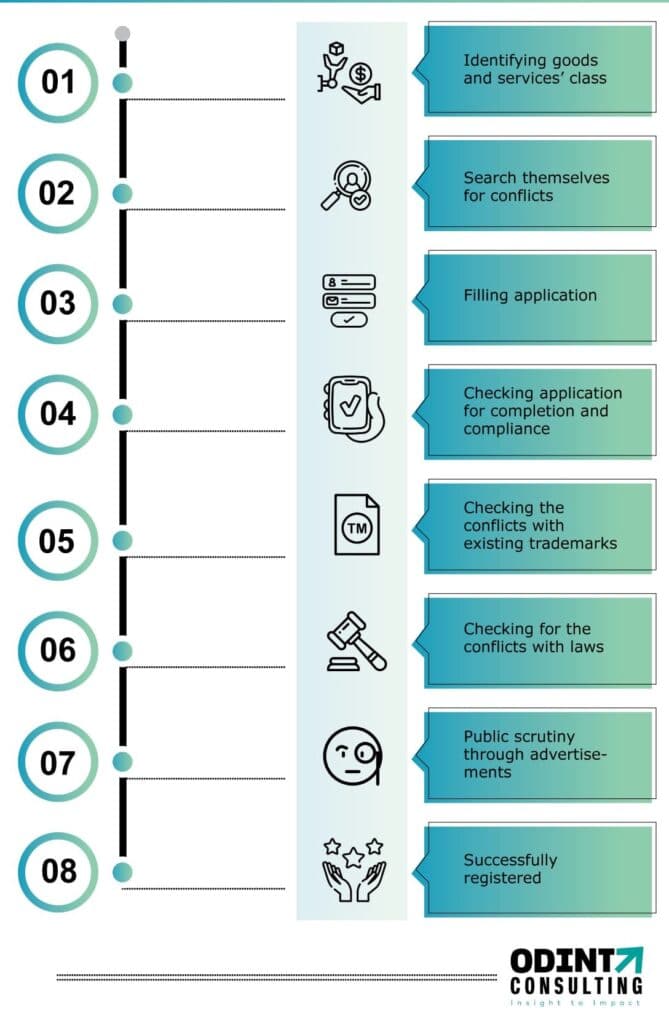Overview: Trademark Registration In Singapore

Singapore is one of the most preferable destinations for conducting business. There is a strong need for intellectual properties and also their protection from malware. To meet this requirement in 1998, the modern Singapore trademark act was passed. The intellectual property officer of Singapore is responsible for the registration process for a trademark in Singapore. He is a statutory body under the ministry of the law of Singapore.
Currently, in Singapore, the following international conventions are-
- Paris convention
- Berne convention
- Patent copyright treaty
- Madrid protocol
- WIPO copyright treaty
- WIPO phonogram and performance treaty and many more.
A registered trademark in Singapore adds a greater value to the business. This trademark registration in Singapore has many benefits not only for Singapore but for your whole business. With the trademark registration in Singapore, the owner of any intellectual property can prevent others from using similar or identical marks without the permission of the owner.
In this article, we will see about the registration process of a trademark in Singapore, requirements for trademark registration in Singapore, advantages of trademark registration in Singapore, and many more.
What Are Trademarks?
A trademark can be a letter, word, symbol, signature, numerical value, device, brand, label, color, shape, heading, or combination of them. Trademark is used to differentiate between the goods of different owners in the normal course of business or trading.
These trademarks gained strong value and monetary value also. A registered trademark is in the form of property and can be licensed or assigned.
Identification For Trademark
TM and ® are the commonly used symbols for trademarks.
- TM states that a trademark is used by the owners, but it is not necessarily protected or registered under trademark law.
- ® is used when the trademark is registered and protected under trademark laws.
Advantages To Register A Trademark In Singapore
The registered trademark offers the owner the right to use and exploit. The certain advantages of trademark registration in Singapore are as follows-
- Right to use the mark exclusively
- Preventing others from copying
- Increase in market value
- Quality assurance for many customers
- Branding by recognition of the mark
- It creates a source of revenue by licensing the third party for commercial use.
- As per the productivity and innovation credit scheme, up to 400% of the tax rebate can be granted by the government of Singapore.
Requirements For Trademark Registration In Singapore
- The following are required for applying for trademark registration in Singapore-
- A statement of the request for registration
- Applicant’s name and address
- Clear graphical representation of the trademark
- Class of goods and services as per the international classification and also the list of goods and services which are being used with trademark
- Declaration related to the use of the trademark
- Application fee.
While filling for an application, the Applicant must make sure that the shape of a trademark is visible and also sustainable with the goodwill of the company or business. In the case of the three-dimensional shape of the trademark, the shape will be shown to be representing lines from 6 faces.
Trademark Registration Process in Singapore

In Singapore, a registrar of trademarks examines the applications for trademark whether it is registrable or not. In the general case, the registration process of a trademark in Singapore takes approximately 8 to 12 months depending on the factors of whether any objection occurs.
An owner can file the application form but hiring a professional for the same is more beneficial. Paper Work is complex. With the help of professionals, the chances of rejection are reduced due to complete and proper information, personal time, and efforts are also saved, and also these professionals can respond and clarify the objectives of the registrar of trademarks registration Singapore.
The following steps are required to be followed for trademark registration in Singapore.
1. Identifying goods and services’ class
It is required to check the class of the goods and services which are being sold under the trademark, before applying. According to the international classification of goods and services also known as ICGS, there are 1 to 45 categories in which goods and services can be classified.
The owner must ensure that the goods must be classified under correct categories. In the case of a wider range of goods and services, the application for different categories should be filed for different goods and services.
2. Search themselves for conflicts
The owner must check the already registered trademarks through the records maintained by the registrar, before applying. The fees for the application form for trademark registration in Singapore are nonrefundable. The reason for checking the existing trademarks is to ensure that there is no similar or identical trademark registered with the registrar.
3. Filling application
Filling an application for trademark registration in Singapore costs about S$341 per mark for each class of goods and services. The mentioned goods and services in the application form must conform to the international classification of goods and services.
4. Checking application for completion and compliance
After receiving the application, the trademark officer reviewed it and ensure the following-
- The application is complete
- The application is compiled with the trademark act Singapore
- Required fees had been paid.
The trademark application number is allotted after this. This number is allotted once after the filing of the application.
If required, the registrar will notify the applicant about the corrections to be made along with the applicable time for successful registration. If an applicant does not reply within the given period, then the application will be rejected on the ground that the applicant has withdrawn his consideration.
5. Checking the conflicts with existing trademarks
After the completion of the above-mentioned steps, the registrar will search for existing trademarks and geographical names, then confirm the goods and services’ international classification. For goods related to pharmaceutical industries, it is required to be specially checked whether it has protected international non-proprietary names. It’s exclusively managed by the World Health Organization.
If any objection occurs, then the application will be rejected by the registrar. If the owner wants to further then he has to file a new application with the required changes.
6. Checking for the conflicts with laws
The next step is to check whether the trademark is compiled with the trademark laws of Singapore. The registrar will then approve that this trademark will not fall in the restricted areas by the Singapore trademark law.
If there is any objection, then the applicant will be informed and granted a period for making corrections.
7. Public scrutiny through advertisements
After a successful examination of the application for trademark registration in Singapore, the application is published in a trademark journal. Within two months of publication, any party can object.
The raised objection will be notified to the applicant. After hearing both the parties, a counter statement is provided by the applicant if required for resolving the objection.
8. Successfully registered
If there are no objections or the prior objections are solved then a certificate of the trademark will be granted to the applicant by the registrar.
Conclusion
Being an entrepreneurial player on Singaporean grounds is an adventure on its own and the business highlights for any new and existing businesses. Singapore is a massive economy and is counted amongst the most prominent business countries in the whole world. Not only thanks to the fresh ideas in the market but also to the Singaporean government to allow these possibilities of growth to be explored.
Along with the numerous opportunities that a business or an organization is subjected to, there are also certain regulations and requirements that a businessman needs to keep in check while growing his / her business since its inception. These regulations and requirements come after the company has gone over its initial procedures of setting up.
In this article, we looked at one of these checks. That is the Singapore Trademark Registration. We defined what a trademark is and how it holds significance in a company’s business being bigger. Every ambitious and unique model has to go through a trademark registration process so they can prevent any discrepancies later on.
We also looked at the procedure to go with when a business goes for a Singapore trademark registration and what are the different documents that need to be checked while doing so.
If your business is looking to file a trademark in Singapore, Odint Consulting is the best call in that process. We hold years of expertise surrounding businesses on foreign and domestic grounds and offer our range of services in multiple countries.
FAQ’s
The trademark registration certificate is valid up to 10 years after approval, and it can be renewed afterward by paying the required fees for the renewal of trademark registration in Singapore.
The trademark registration process takes a period from 8 to 12 months in general cases.
Officially, the registration of a trademark in Singapore costs about S$341 per mark per class of goods and services. In the case of a variety of goods and services, the applications will be filled for each class.

